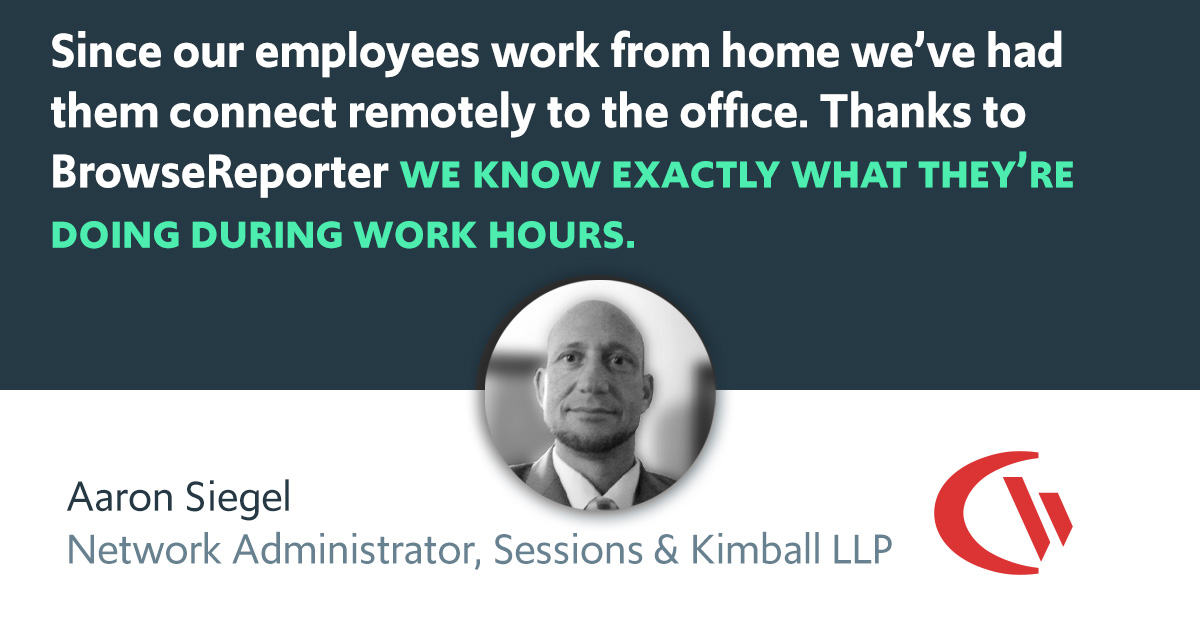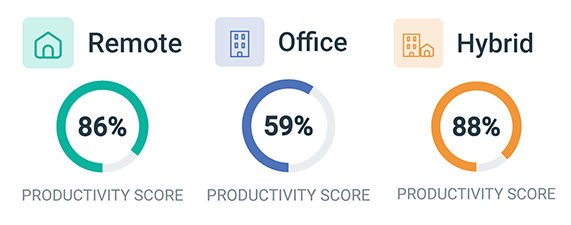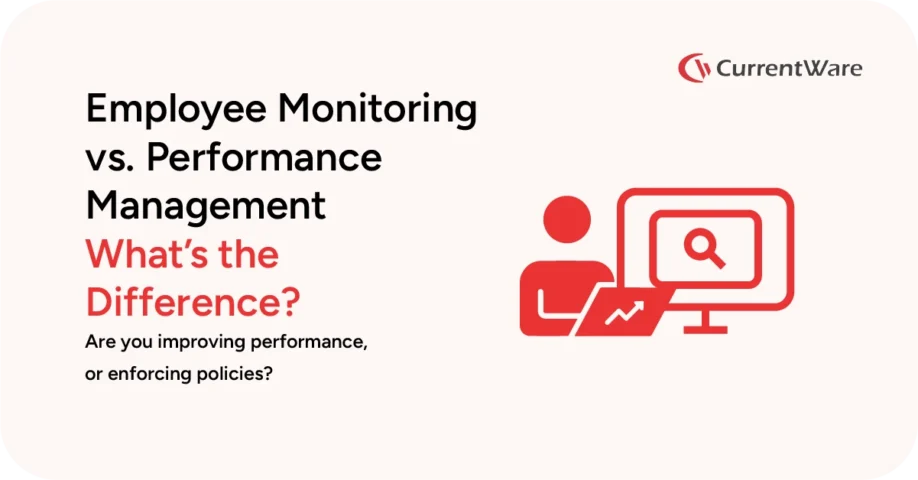Remote Work vs Office Productivity — Which is More Productive?

Is remote work the way forward, improving employee happiness and productivity, or just a passing trend that is undermining teamwork and business efficiency?
Since the rise of home-working during the COVID-19 pandemic there’s been an ongoing dilemma of when, or if, employees should return to the office.
As businesses transitioned to remote work setups, workers have come to appreciate the benefits of working from home.
However, some businesses are reporting that productivity and collaboration are dropping with widespread remote working and they want employees to return to the office.
So, the debate rages on: Is remote work as productive as traditional office work?
The Rise of Remote Work
The rise of remote work was predominantly driven by the COVID-19 pandemic in 2019. The percentage of work done at home increased significantly, rising from 4.7% in January 2019 to 61% in May 2020.
In response to the pandemic, businesses had to quickly adapt and put in place the technology and remote systems to enable employees to work at home. This forced companies to reassess their ways of working, and many found that they actually transitioned to remote working with relative ease.
Many industries, such as those employing virtual contact center solutions, found they could seamlessly operate customer service and sales teams from any location. This not only benefited employees but, in many cases, also reduced the overhead costs associated with running an in-house call center.
Now, remote work and hybrid models are widely accepted and even expected by many employees and job seekers. In one survey by Zapier, one-third of respondents stated they had already quit their jobs because they couldn’t work remotely. And more than half would consider leaving their current job for a fully remote one.
Also, 40% of jobseekers would accept a lower salary to be able to work remotely.
The Work Environment Productivity Debate
The debate between remote and office-based work is not going away anytime soon. Despite many large corporations and businesses famously urging employees to return to the office—such as Google, Meta, Salesforce, Amazon, and Zoom— opinions are divided on which setup is better for productivity.
According to one survey, 66% of employers lack trust in their employees’ ability to work remotely, despite only 20% reporting a decrease in productivity after transitioning to remote work.
Supporters of traditional office-based work argue that face-to-face interaction and a structured environment are important for effective collaboration. They believe remote work can lead to disconnected teams and makes it harder to encourage interaction and accountability amongst employees.
On the other side, advocates of remote work argue it can make employees more productive. They say modern technology makes collaboration from anywhere possible, and the flexibility and fewer distractions of remote work lead to happier, more focused employees.
Pros of Remote Work on Productivity
Increased Focus and Output
Working from home allows employees to create the ideal workspace that suits their needs. For those easily distracted by chatty colleagues or frustrated by frequent interruptions, this can help to improve productivity.
Many remote workers report feeling more focused without the distractions of a busy office environment, allowing them to focus on tasks and improve their output.
At the same time, remote working can bring its own set of distractions. If friends or family members don’t respect your work-from-home schedule, it can lead to unwanted interruptions. Nobody wants to be in the middle of an important call only to be interrupted by a family member barging in or a delivery driver knocking on the door.
Improved Work-Life Balance
Without having to factor in a daily commute every day, remote employees can often strike a better work-life balance. By having more time to prepare for the day, and not having the stresses of dealing with rush hour traffic or public transport, remote employees often feel more refreshed and motivated in their jobs. Plus, at the end of the day, they can simply log off and enjoy their evening.
This better job satisfaction and reduced stress levels often lead to higher productivity.
However, employees can find it hard to strike the right balance when remote-working and find the lines between their personal time and when they are working become blurred. When your place of work is also your home, it can be hard to switch off and it can sometimes feel like you’re working 24/7. To avoid burnout, it’s important to set boundaries between work and personal life.
Greater Flexibility and Time Management
Perhaps one of the biggest advantages that remote workers appreciate is the flexibility it brings. It’s more than just about being able to fit in the school run or a lunchtime dog walk. The traditional 9-5 work day doesn’t suit everybody, whereas remote work lets employees structure their days to maximize productivity and minimize distractions. So, if you’re an early bird or a night owl, you can plan your day to focus on tasks when you know you will be at your most productive.
This flexibility doesn’t just benefit employees either, it can enable businesses to tap into talent pools they wouldn’t otherwise reach. For example, customer support call centers often operate at unsociable hours, such as late evening. With call center outsourcing, businesses can hire remote workers who prefer flexible hours, as they can easily fit them around existing obligations like childcare. Nonprofits leveraging productivity tools can boost remote teamwork, making collaboration smoother—even across different time zones.
Cons of Remote Work on Productivity
Communication Challenges
Few would argue that good communication is one of the main catalysts to a productive workplace. Although remote work tools and technology enable employees to connect from anywhere, the absence of face-to-face interaction can result in miscommunication and misunderstandings.
Setting up a meeting to discuss something takes longer than just popping into a colleague’s office. It’s these informal chats and catch-ups that are often missed, which can lead to delays or missed opportunities.
Social Isolation and Loneliness
While some people thrive on the peace and quiet of remote working, loneliness can be a real issue for home-based employees. In one survey, 70% of employees who now work remotely reported feeling lonelier than when they were office-based.
Without the camaraderie of an office environment, employees can start to feel disconnected from their teams and feel isolated. Since there’s nobody around to boost your morale, remote workers rely heavily on self-motivation. If this motivation starts to suffer, it can impact how productive they are.
Case Study: Employee Productivity Monitoring Software Makes Remote Work Possible for Sessions & Kimball LLP

As an experienced employment rights law firm, Sessions & Kimball LLP’s clients expect nothing short of excellence. To maintain their firm’s high standards when they transitioned to remote work they knew that they needed a dedicated remote employee monitoring solution to help manage the productivity of their remote workforce and make sure their clients get the service they deserve.
Read Session & Kimball LLP’s story to learn how increased visibility into their remote worker’s computer activity gave them the insights they needed to make remote work possible.
Pros of Office-Based Work on Productivity
Face-to-Face Collaboration
Microsoft Teams and Zoom meetings quickly became the norm as a way for employees to connect during the COVID-19 pandemic, replacing traditional in-person meetings. However, while these tools are great for keeping in touch remotely, they aren’t perfect.
We’re not just talking about the classic “I think you might be on mute” struggles either. Virtual meetings can lack the personal interaction of meeting face-to-face, making it harder for people to speak up and contribute ideas. It can also be easier to disengage or get distracted by multitasking when you’re not physically present in a discussion.
Plus, working in the office alongside colleagues allows for spontaneous brainstorming or problem-solving. This can lead to more creativity and better collaboration amongst teams.
Immediate Access to Resources
In an office setting, employees are well-equipped with the tools and resources they need to do their jobs. Whether it’s software access, technical support, or just office supplies, they can quickly access whatever they need.
Although to reduce some of the challenges faced by remote workers, businesses can employ technology like remote access software or conversational AI tools to help employees quickly find things they need – like company policies, documents, or other essential information.
Clear Boundaries Between Work and Home
Being in an office environment helps employees set boundaries between their work and personal lives. When they leave the office, they can mentally switch off from work and concentrate on personal matters, without the temptation to check emails or answer calls. This separation can contribute to better work-life balance and ultimately higher levels of productivity.
Cons of Office-Based Work on Productivity
Commute and Time Constraints
For many workers, commuting to and from the office can be time-consuming and stressful. On average, employees spend 10.5% of their available work and travel time on commuting, eating into valuable time that could be spent on more productive activities.
Office Distractions and Interruptions
Working from a busy office can be filled with distractions, from talkative colleagues to impromptu meetings or unwelcome interruptions disrupting workflow. Some employees can struggle to stay focused on their tasks in this environment.
Limited Flexibility and Control
Working in an office often comes with limited flexibility. While flexible working policies are becoming more widely adopted and can offer some freedom, there are still generally set hours that employees are expected to be in the office.
Some employees can find this routine stifling, especially those who thrive in a more autonomous environment. While employees might be physically present in the office, their productivity can be affected if they’re not feeling on the ball at 8 am, or they hit an afternoon slump at 3 pm.
Balancing Remote and Office Work
Both remote work and traditional office setups come with their own set of pros and cons. While many employees appreciate the perks of remote work, like avoiding commutes and office politics, having some staff regularly in the office each week offers the best of both worlds.
Some strongly advocate for a remote-only future, pointing to increased productivity, while others welcome the return to the office, feeling more energized by collaboration. A hybrid setup, combining elements of both remote and office work, often offers a good compromise, providing people with options.
Improve Employee Productivity With
CurrentWare’s Remote Employee Monitoring Software
Ready to get advanced insights into how your employees spend their time? Reach out to the CurrentWare team for a demo of BrowseReporter, CurrentWare’s employee and computer monitoring software.
- Improve Productivity
Track unproductive web browsing and idle time to detect time-wasting - Save Time With Intuitive Reports
User-friendly reports make it easy to understand employee computer activity - Enhance Visibility
See how employees spend their time—even on Terminal Server and Remote Desktop Services!
About the Author
Jessica True – Senior Director, Marketing Strategy & Operations
Jessica True is the Senior Director for Marketing Strategy and Operations at Dialpad, a modern business communications platform that takes every kind of conversation to the next level—turning conversations into opportunities. Jessica is an expert in collaborating with multifunctional teams to execute and optimize marketing efforts, for both company and client campaigns. Sam has written for other domains such as eCommerce Fastlane. Here is her LinkedIn.



